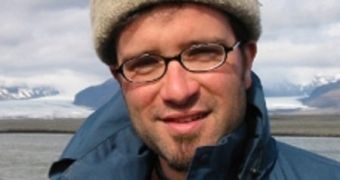A researcher at the University of California in Los Angeles (UCLA) says in a new book that global warming will have an unexpected effect, and namely that it will bring the North into focus.
According to Laurence C. Smith, as temperatures rise and the ices recede from northern Europe, Canada and the United States, more and more people will move to these areas, bring with them new development opportunities.
The UCLA geographer calls this The New North. He explains that Siberia, Scandinavia, and other regions that have thus far remained sparsely-populated, will experience a new boom.
Global population is expected to increase by more than 40 percent over the next four decades, and all those extra people need to live somewhere.
As such, the North will become a population magnet, and also a new center of global power. Smith details the idea in “The World in 2050: Four Forces Shaping Civilization's Northern Future.”
The book is scheduled to be published by Dutton Books on September 23. One of its main ideas is that climate change and receding ices will make new, plentiful resources available for exploitation.
These resources include water, natural gas and oil, which have thus far been kept out of reach. Smith says that, in addition to enriching existing residents, the new wealth will also attract many newcomers.
“In many ways, the New North is well positioned for the coming century even as its unique ecosystem is threatened by the linked forces of hydrocarbon development and amplified climate change,” the UCLA professor of geography, and Earth and space sciences, writes.
He also predicts that new shipping lanes will be made available to international traffic, especially in the summer months. This will finally make Europe's dream of trading with Asia directly a reality.
Additionally, the population of Canada is very likely to double over the next 40 years, given that its oil resources are second only to those in Saudi Arabia.
“In many ways, the stresses that will be very apparent in other parts of the world by 2050 – like coastal inundation, water scarcity, heat waves and violent cities – will be easing or unapparent in northern places,” Smith believes.
“The cities that are rising in these NORC [northern rim] countries are amazingly globalized, livable and peaceful,” he adds.
“There's a new part of the world that's emerging, with vast continents and a harsh geographical gradient but also resource and immigration bonanzas,” the expert goes on to say.
“Humanity will increasingly look north in response to the four global pressures of rising population, resource demand, globalization and climate change,” he concludes.

 14 DAY TRIAL //
14 DAY TRIAL //